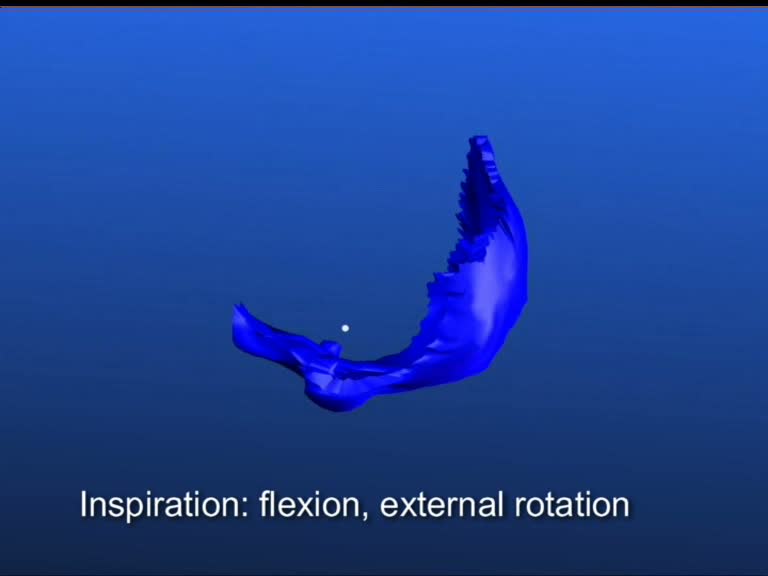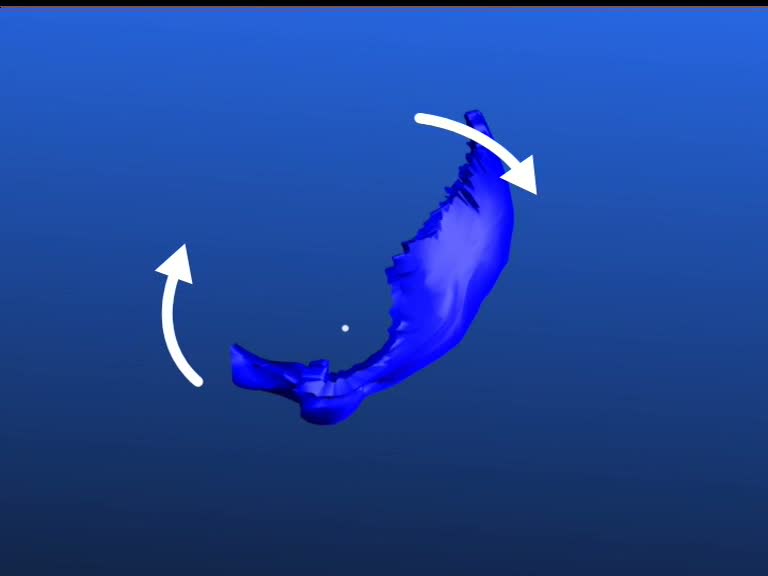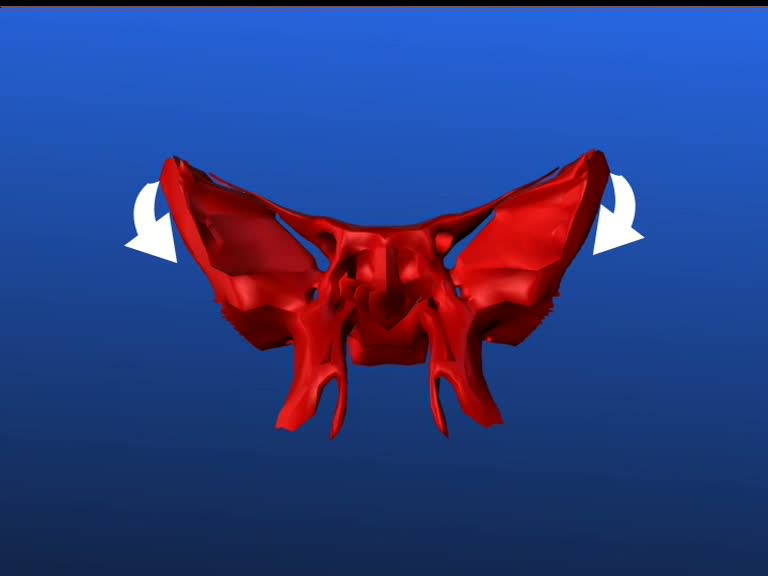The transverse axis of the flexion movement should be in front of the sella turcica
 occipital bone:
occipital bone:
The transverse axis for flexion movement should be located above the foramen magnum at the level of the jugular process. During inspiration the basilar part (pars basilaris) should move superior and slightly anterior and the superior part of the squama should move inferior and posterior.
Intraosseous adaptation of the occipital bone to a global expansion and retraction of the skull
 sphenoid bone:
sphenoid bone:
The transverse axis of the flexion movement should be in front of the sella turcica. During the inspiration phase the posterior part of the body (corpus) should rise and the anterior portion should sink (or lower itself).
The transverse axis of this movement should be in front of the sella turcica. The greater wings (alae majores) do an external rotation. They move externally, anterior and inferior.
The pterygoid processes move posterior and lateral.
A movement at the SBS level is unlikely in adults.
A rhythmical variation of tension is more likely.
Intraosseous adaptation of the sphenoid bone to a global expansion and retraction of the skull.









